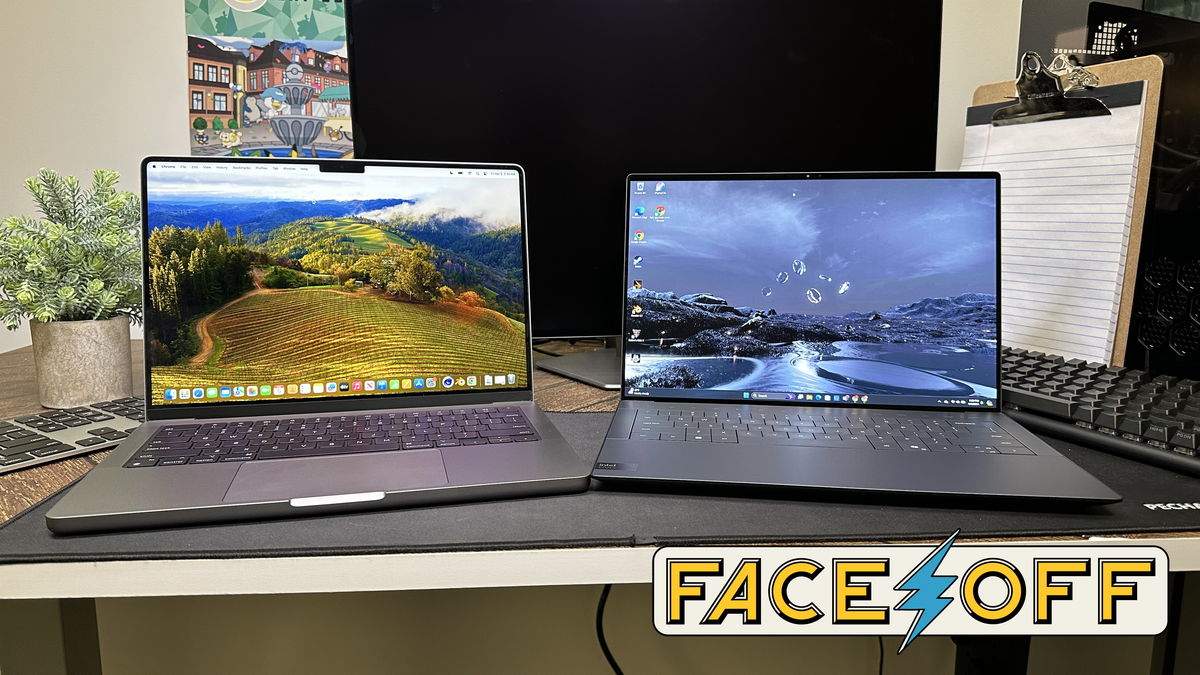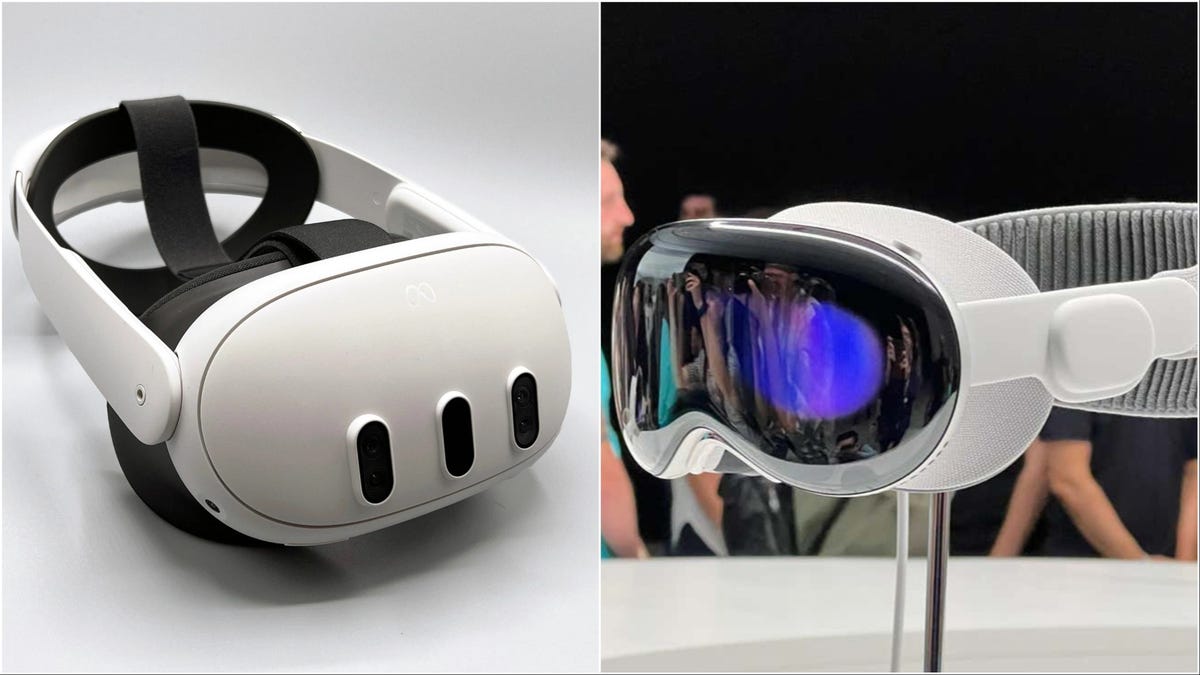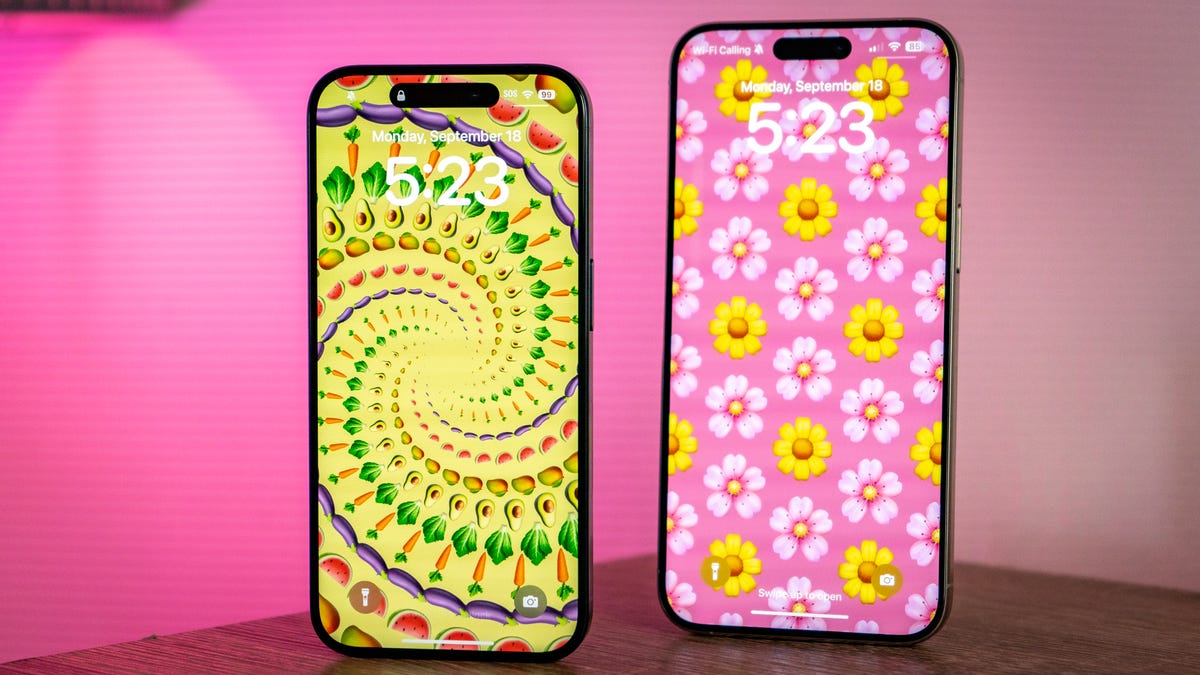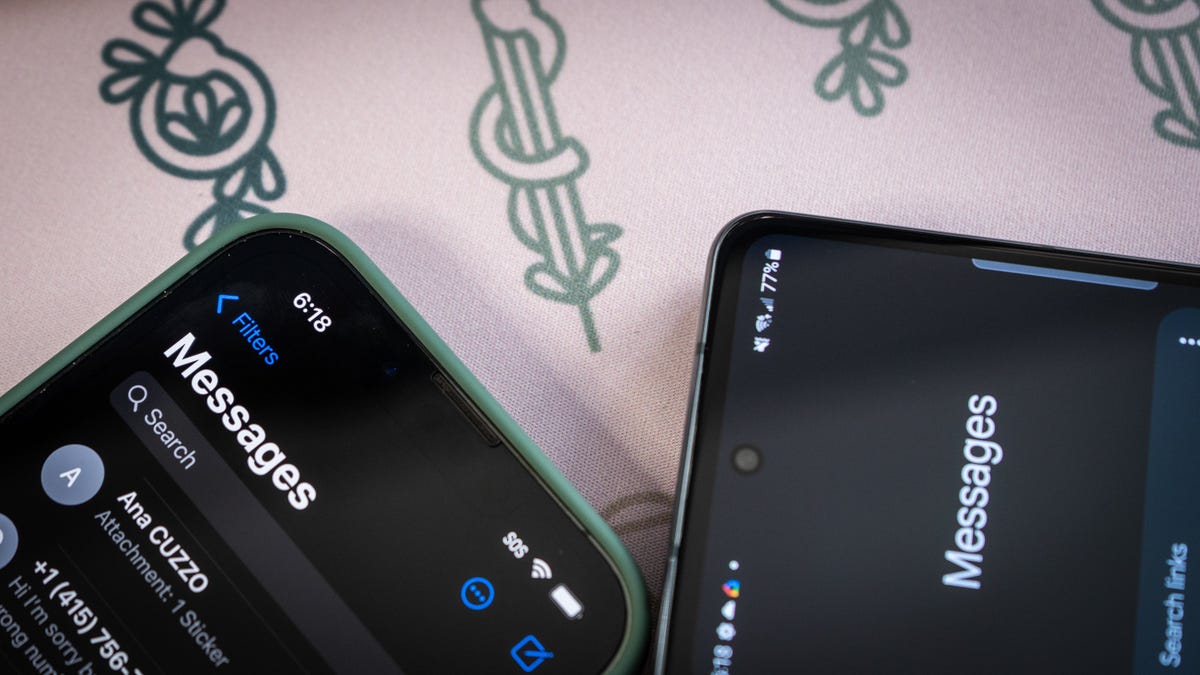Today’s competition could not be more divergent in the battle of the everything laptop. On one hand, we have Apple and its M3 MacBook Pro, a design that has remained the same for the past several years. The company is hinging its hopes on a simple design that works along with the strong performance of the M3 chips, the most powerful in its M-series yet. On the other end of the spectrum is Dell, with its newfangled XPS. This laptop is strange to look at and strange to use, and yet it packs the latest version of Intel’s CPUs and has the option for a discrete GPU to better graphical performance against Apple’s all-in-one design. It’s a competition of comfort versus novelty, of tried and tested versus the unfamiliar.
We’re all for ingenuity and innovation, but Dell’s XPS design was reasonably controversial when the company released the XPS 13 Plus back in 2022 and even more so when the company doubled down on it this year with a new 14- and 16-inch version sporting the same look with its invisible trackpad, flat keyboard, and glowing touch function bar.
On the other hand, Apple may be playing it too safely. The M3 MacBook Pro was released the same year as the M2 MacBook Pro, and it was effectively the same laptop to the point it replaced the earlier version in October 2023. Now, the company has come out with MacBook Airs with M3 that also look and feel very familiar compared to the earlier M2. Hell, certain configurations of the Air benchmark are nearly identical to the M3 MacBook Pro 14.
This makes for exciting competition this year, especially for those looking for their bread-and-butter mobile computer. The MacBook Pro has an edge in ports, with a full SD card slot and HDMI alongside two Thunderbolt 4 USB-C. The XPS has three USB-Cs, a micro-SD card slot, and the usual headphone jack. Dell’s PC comes with a small plastic dongle for sticking in an HDMI, but it’s something of note when both laptops are practically the same thickness. The XPS has a far more interesting design than the latest MacBook, but does an intriguing look make a better laptop? Let’s find out.
Dell XPS Vs. MacBook Pro Design, Keyboard, and Trackpad
MacBooks Don’t Seem Novel, but They Won’t Let You Down
This is the make or break for folks thinking about getting the latest Dell or Apple laptop. The XPS 14 redesign is a major departure from where it was before. It’s bold, striking, and, in many ways, a mixed bag. On the other hand, the MacBook is a tried and tested form factor that weighs less and feels far more familiar for those used to the Magic keyboard and trackpad.
The MacBook Pro 14 with M3 looks the same as the M2 version. That move from the sloped sides to the more straightforward, boxy design has been widely accepted at this point, even if it makes the laptop look like every other design out there if it weren’t for that Apple logo on the exterior shell. Dell went the exact opposite way as its competitor. The new XPS design, first introduced two years ago, went gunning for that sloped design of older MacBook Airs, though with more dramatic lines and extremely price engineering that gives it an overall sleek look. I like the XPS look more than the MacBook, at least from the outside.
The inside is an entirely different story. Whereas Apple is using the age-old keyboard and trackpad on its M3 MacBooks, Dell came in swinging with a dramatically flat interior, an invisible trackpad under a huge pane of glass, no space between the keys, and a touch function row that turns your volume and brightness buttons into a pseudo-MacBook Pro 13 touch bar. However, we will say that Dell’s design looks a lot better than that of the now-defunct Apple product.
Both feel sturdy under your hands, though the MacBook weighs less at 3.5 pounds versus the XPS’ 3.8 pound. The MacBook doesn’t feel new or unique or even particularly standout to type on, but it’s fine with a definitive click to every key. The XPS keys have slightly less travel and feel a touch squishier. I could get used to the feel of a keyboard without any space between the keys, but I would be fair assuming some can’t. There is very little depth to each key, which means your fingers can slide around if you’re the type of typer who likes to dance around the keyboard rather than clatter. MacBook’s Magic keyboard is fine but almost humdrum for any consistent Mac user. The XPS is radical, for better or worse.
The “worse” in this case is the touch function row. The keys are responsive, and I don’t mind them for volume or brightness. What I do mind is that the ESC key is a touch button. It’s a weird thing to harp on, but it just doesn’t feel right. I never accidentally pressed the touch function row, but your affinity to glowy objects depends on your liking.
The trackpad on MacBooks is a fine rink to skate on, but the XPS is also a very smooth ride. The XPS trackpad is a full glass pane that stretches from the Windows key to the left arrow button. It’s larger than Apple’s, but you’ll get used to either size. The trackpad on the XPS is a smoother experience than the MacBook, but that doesn’t exactly change the overall experience. Simply put, the Apple experience works and is comfortable, but the XPS takes getting used to, perhaps even too much.
Dell XPS Vs. MacBook Pro Performance
It’s a Mixed Bag Either Way
The latest M3 chip is indeed a performance beast for its size, able to stack up well against the latest CPUs from other chipmakers. The M3 maintains a slight edge over the Intel Core Ultra 7 in both Geekbench and Cinebench scores, but not to such a degree that you’d see any performance difference between both machines unless you’re doing any kinds of rendering tasks. If you were, you shouldn’t be jumping for the lower-end laptops anyway and would be better served with the 16-inch versions of either the Dell or Apple.
But what about graphical performance? After all, the XPS can support a discrete GPU, so it should certainly have a better time handling tasks like light gaming. According to the benchmark scores, it definitely does. In 3D Mark Wild Life tests, the extra power of the laptop-grade 4050 plus 32 GB of RAM does more than twice as well as a base M3 with 16 GB of RAM. Without precise configurations, we can’t perform a 1-to-1 head-to-head graphical performance, but while the base M3 is not slouch for some light gaming, the XPS should do better.
You still won’t see the utmost power on the 14-inch XPS as you would with a beefier machine. It can handle some graphical tasks better than MacBook Pros, but in Blender benchmarks, we saw the MacBook edge out the XPS when rendering a single scene. This was a difference of a few seconds, but if it matters, the MacBook is a fine-tuned machine, and the Arm-based M3 chips do the job far more efficiently than their base 8-core CPU and 10-core GPU seems to imply.
But again, we’re talking about minute performance differences that will only matter to a select few users. If you want to use either device for light gaming, the XPS will be better able to handle cross-platform titles like Baldur’s Gate III. Plus, a Windows machine will offer a far easier gaming experience than a Mac, no question about it. You’d be served well with either the MacBook Pro or XPS for most moderate tasks and if you’re only using them for basic productivity, either machine fits the bill.
Dell XPS Vs. MacBook Pro Battery Life
Nobody Beats Mac on Longevity
There’s no question: the MacBook Pro with the M3 chip will last far longer than the XPS. Dell’s laptop will go for perhaps 7 hours doing basic tasks on default performance settings before you’ll need to charge.
MacBooks are renowned for their battery life, and when Apple promises at least 18 hours, they’re not kidding. The XPS will last you a bare workday so long as you don’t ask it to do anything special. The MacBook Pro will last you a full workday and an evening on the couch and still have enough juice left in the tank to get you through a morning grind. There’s no comparison. The MacBook wins on battery, hands down.
Dell XPS Vs. MacBook Pro Display and Sound
It’s a Case of OLED Vs. mini-LED
The MacBook Pro uses Apple’s Liquid Retina XDR display, which is the company’s mini-LED formula. It’s a bright, beautiful display, same as it ever was. You can’t blame the Cupertino, California company for sticking with what works, though, for goodness sake, I wish the notch would finally make a graceful exit stage right. It’s also an incredibly bright screen, with a stated HDR brightness of 1,600 nits and SDR of 1,000 nits. You know what? It’s very colorful, and while it doesn’t match the deep blacks of OLED, it does a fairly good job of emphasizing colors. Just judge by that base wallpaper. It just looks good.
The XPS either comes with a 14.5-inch FHD+ display that’s non-touch, or you can get the OLED that is indeed a touchscreen. First, it has a stated peak brightness of 400 nits, so it’s not like you’re getting the brightest screen around. But let’s also admit that it’s unnecessary, as the screen is bright enough, considering you’re here for the excellent color contrast and those inky blacks you want from a modern laptop screen.
How far you get with either of these screens depends on preference. Apple’s XDR is solid and a known quantity. You get excellent brightness and adaptive refresh rates up to 120 Hz. The same goes for the XPS, though Dell’s laptop supports Dolby Vision for advanced HDR. If you demand OLED, then there’s only one choice. The XPS also has slightly thinner bezels than the MacBook Pro, and it doesn’t have to sacrifice any screen real estate for a stupid notch. Still, you can’t go wrong with either.
The XPS does boast some pretty loud sound, but even with that, it doesn’t have the real surround sound promised. On the other hand, MacBook Pros still boast some excellent sound quality, whether at 14 or 16 inches. Compared to the MacBook, the XPS has a slightly more tinny sound that’s only noticeable if you play both side by side. Apple’s machines still have an overall edge in sound quality.
Dell XPS Vs. MacBook Pro Pricing Model
Upgrades Will Cost You a Pretty Penny Either Way
The XPS 14 costs $1,449 at the base, while the MacBook Pro 14 asks for $1,599. So, does the XPS win? No. There are only losers here. Many folks have been upset at how Apple’s upselling model entices users to spend closer to $2,000 to ensure the device is a little more future-proof. Unfortunately, Dell has tried a very similar tactic.
The base MacBook Pro with the regular M3 chip only has 8 GB of RAM. That might perform a little better than other kinds of stock DDR5, but it’s not really future-proof by any stretch of the definition. Want 16 GB of unified memory? You’ll need to spend $2,000. Why settle for the base M3 when you could get the more powerful M3 Pro chip? Spend $2,000, and you can get that, but wait, you’ll only have a 512 GB SSD. That doesn’t seem like enough, so perhaps you pay $2,399 for all that and 18 GB of RAM.
Something similar happens with the XPS. The 14-inch laptop does come with 16 GB of memory standard, but what if you want an OLED screen? That will be an extra $300. Want the Nvidia GeForce RTX 4050 discrete GPU? An additional $300. Want 1 TB of internal storage? That’ll be an extra $100. With all the bells and whistles, both laptops suddenly started looking very similar in price. The base XPS 14 is a better deal at the baseline, especially since it comes with 16 GB of RAM, and at least the SSD upgrade doesn’t cost nearly as much as Apple’s selection. Without the discrete GPU, you will lose out on some graphical performance, and of course, Apple’s infrastructure benchmarks are better than those of Dell’s.
These two laptops want you to spend more, and you probably should if you expect to use the laptop for more than just one or two years.
The XPS is a Great Machine, But MacBooks Work Too Well to Be Beat by Novelty
The MacBook Pro does what it says on the tin. It works, and it works exceptionally well. The XPS, on the other hand, is a mixed bag. There are things you could love and things you could hate. We said in our review that you need to be all-in on XPS’ design to love it; otherwise, it will fall short. The MacBook, for better or worse, doesn’t have that problem.
Still, you should note each device’s price points and determine your primary use. There are far better gaming machines around the same price as the XPS, and the RTX 4050 shouldn’t be your main reason for getting the laptop. The OLED screen is a great competitor to Apple-brand displays, but again, you must pick your poison there, especially when you start to see your costs balloon with every upgrade. The same goes for MacBook Pros, though Apple is probably more egregious.
Ultimately, the XPS won’t draw any Apple fans away from Tim Cook and Co. For those who want their next machine to match the performance of a MacBook with Windows, you might end up turned away by its standout design. If you’re on the fence, it’s best to go with what’s most comfortable, not what you might hate in just a few weeks.
Want more of Gizmodo’s consumer electronics picks? Check out our guides to the best phones best laptops, best TVs, and best headphones. If you want to learn about the next big thing, see our guide to everything we know about the iPhone 16.








